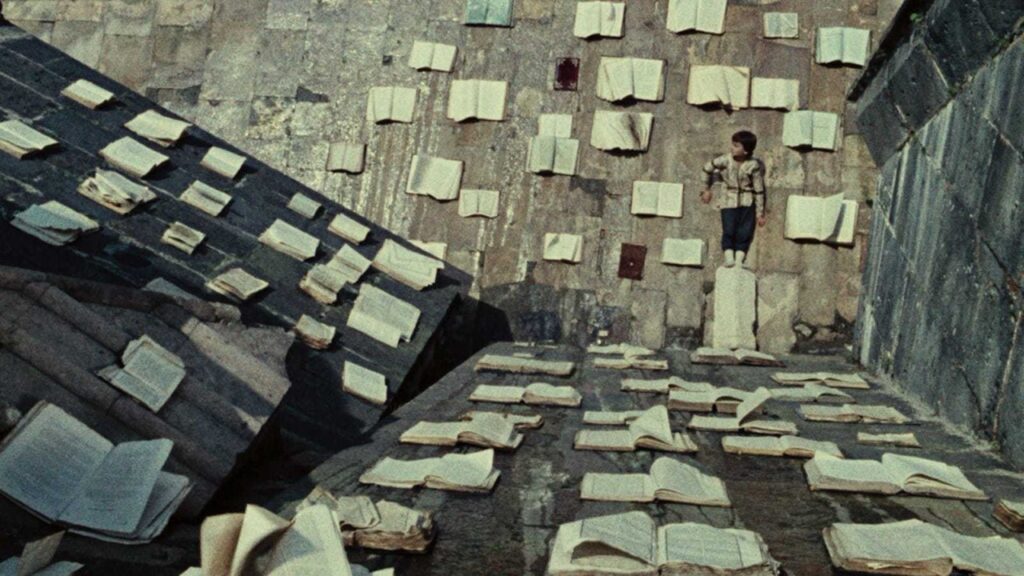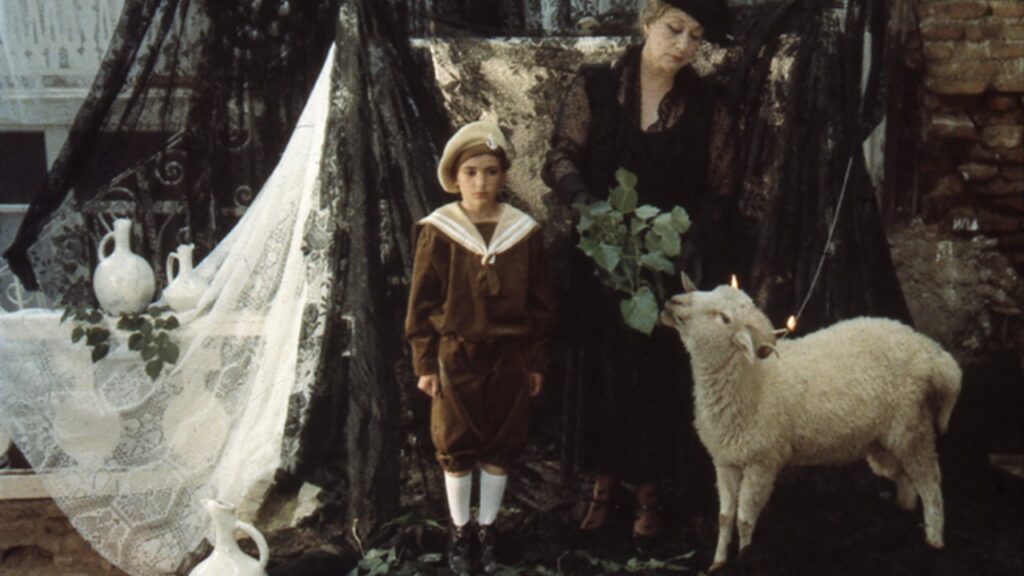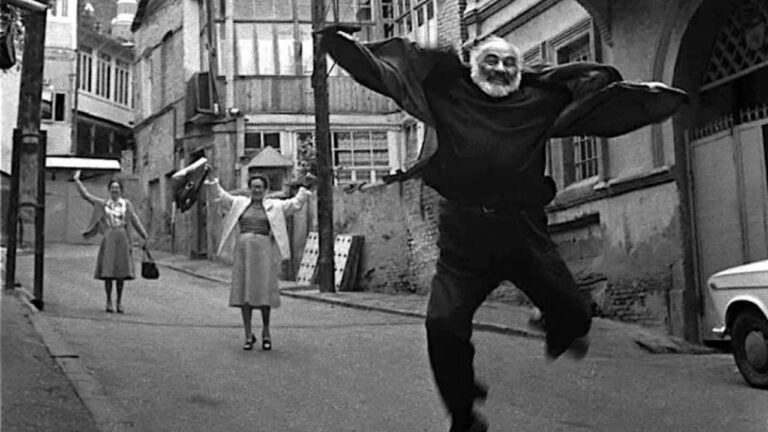Mikhail Vartanov’s 1992 documentary ‘Parajanov: The Last Spring‘ presents a detailed account of the later years of Sergei Parajanov, the Soviet-Armenian director known for his unconventional approach to filmmaking. The film focuses on Parajanov’s life after his release from prison and exile, showing both his creative work and the personal challenges he faced during this period.
Sergei Parajanov’s career was marked by both innovation and conflict with Soviet authorities. His 1968 film The Color of Pomegranates became widely recognized for its unique visual style and cultural references, yet Parajanov’s nonconformity and the abstract nature of his work led to friction with state censors. In the 1970s, Parajanov was arrested by the KGB and accused of immoral conduct and anti-Soviet activity. He spent several years in Ukrainian prisons, and this experience interrupted his career and limited his ability to work openly within the Soviet film system.
Documenting Parajanov’s Life Through Letters and Images

Vartanov, who was a friend and colleague of Parajanov, created Parajanov: The Last Spring to document his life during the final years. The film includes footage of Parajanov working on The Color of Pomegranates, offering viewers a rare look at his methods, including his attention to detail in composition and the staging of scenes. Scenes from Parajanov’s unfinished autobiographical film, The Confession, are also included, showing aspects of his personal reflections and interests late in life.
Another significant element of the documentary is the inclusion of letters written by Parajanov during his imprisonment in Ukrainian prisons in 1974. These letters provide direct evidence of his thoughts and experiences while incarcerated and illustrate the conditions he endured. By combining this material with visual footage, Vartanov creates a narrative that documents both the professional and personal aspects of Parajanov’s life.
The film’s structure is straightforward. Vartanov uses voiceover to provide context, but the main focus is on visual documentation. This allows the images of Parajanov working, interacting, and reflecting to remain central, giving the viewer a clear sense of the environment and the processes involved in his work.
Upon release, Parajanov: The Last Spring received recognition for its accuracy and focus. It won the Nika Award for Best Documentary Film in 1993 and the Golden Palm Award at the Beverly Hills Film Festival in 2003. It has also been included in film retrospectives, including the 2024 centennial event for Parajanov at the Academy Museum of Motion Pictures. These screenings have helped to maintain interest in Parajanov’s life and work and provided access to material that is otherwise difficult to find.
Parajanov: The Last Spring is A Primary Record of Creative Process

The documentary provides a detailed record of Parajanov’s work and circumstances. It shows how he continued to engage with filmmaking after years of imprisonment, and it documents the materials, correspondence, and footage that make up the late part of his career. For researchers, film students, and audiences interested in Soviet-era cinema, the film offers primary sources that can be studied to understand Parajanov’s approach to storytelling, composition, and thematic choices.
Vartanov’s work also highlights the relationship between the filmmaker and the documentarian. The film benefits from Vartanov’s familiarity with Parajanov’s methods and the trust established between them. This allows for a level of access that might not have been possible with an outside observer. The documentary captures day-to-day work, discussions about projects, and moments of reflection, providing a record of Parajanov that goes beyond what could be reconstructed from public records alone.
Parajanov: The Last Spring does not offer analysis or interpretation beyond what is directly observable in the footage and documents. Instead, it provides viewers with primary material that shows both Parajanov’s creative activity and the historical context in which he operated. The film serves as a reference point for understanding the later period of his life, including the challenges he faced due to political persecution and the limitations on artistic freedom in the Soviet Union.




